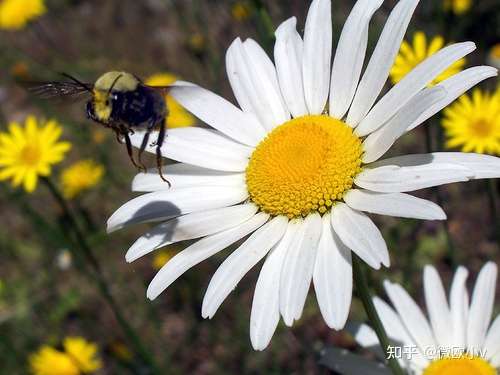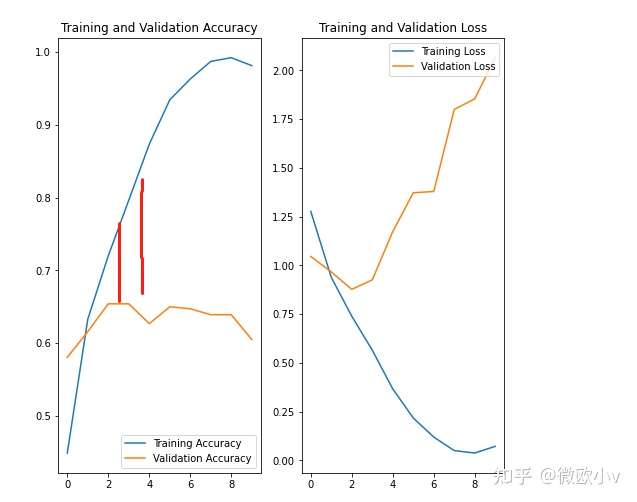1 收集下载数据
2 读取本地数据
3 搭建网络模型CNN
4 编写训练文件 train.py
5 编写预测推理文件predict.py
本程序使用tensorflow的keras 库,适用tf版本为2.9。
导入常用的库
# -*- coding:utf-8 -*-
import matplotlib.pyplot as plt
import numpy as np
# TensorFlow and tf.keras
import tensorflow as tf
from tensorflow import keras
# Helper libraries
import numpy as np
# import matplotlib.pyplot as plt
import tensorflow as tf
from tensorflow import keras
from tensorflow.keras import layers
from tensorflow.keras.models import Sequential
print(tf.__version__)
import os
#import PIL
import pathlib下载小花库链接:https://pan.baidu.com/s/1-SK-mcS6MNXoa0i60g7FEw
提取码:dmi7
flower_photos的文件夹内部



读取文件夹中的花,兵将花分成8:2训练集和验证集。
data_dir = pathlib.Path('E:/lide/keras/flower_photos')
print(data_dir)
image_count = len(list(data_dir.glob('*/*.jpg')))
print(image_count)
batch_size = 32
img_height = 180
img_width = 180
#use 8:2 train and valigation
train_ds = tf.keras.utils.image_dataset_from_directory(
data_dir,
validation_split=0.2,
subset="training",
seed=123,
image_size=(img_height, img_width),
batch_size=batch_size)
#验证集
val_ds = tf.keras.utils.image_dataset_from_directory(
data_dir,
validation_split=0.2,
subset="validation",
seed=123,
image_size=(img_height, img_width),
batch_size=batch_size)
#class_names = train_ds.class_names
class_names = ['1.daisy', '2.dandelion', '3.roses', '4.sunflowers', '5.tulips']
print(class_names)上段执行后的结果为
3640
Found 3640 files belonging to 5 classes.
Using 2912 files for training.可见有3640个样本,其中2912个样本将作为训练样本。
训练文件 train.py
# -*- coding:utf-8 -*-
import matplotlib.pyplot as plt
import numpy as np
# TensorFlow and tf.keras
import tensorflow as tf
from tensorflow import keras
# Helper libraries
import numpy as np
# import matplotlib.pyplot as plt
import tensorflow as tf
from tensorflow import keras
from tensorflow.keras import layers
from tensorflow.keras.models import Sequential
print(tf.__version__)
import os
#import PIL
import pathlib
data_dir = pathlib.Path('E:/lide/keras/flower_photos')
print(data_dir)
image_count = len(list(data_dir.glob('*/*.jpg')))
print(image_count)
batch_size = 32
img_height = 180
img_width = 180
#use 8:2 train and valigation
train_ds = tf.keras.utils.image_dataset_from_directory(
data_dir,
validation_split=0.2,
subset="training",
seed=123,
image_size=(img_height, img_width),
batch_size=batch_size)
#验证集
val_ds = tf.keras.utils.image_dataset_from_directory(
data_dir,
validation_split=0.2,
subset="validation",
seed=123,
image_size=(img_height, img_width),
batch_size=batch_size)
#class_names = train_ds.class_names
class_names = ['1.daisy', '2.dandelion', '3.roses', '4.sunflowers', '5.tulips']
print(class_names)
for image_batch, labels_batch in train_ds:
print(image_batch.shape)
print(labels_batch.shape)
break
AUTOTUNE = tf.data.AUTOTUNE
train_ds = train_ds.cache().shuffle(1000).prefetch(buffer_size=AUTOTUNE)
val_ds = val_ds.cache().prefetch(buffer_size=AUTOTUNE)
normalization_layer = layers.Rescaling(1./255)
normalized_ds = train_ds.map(lambda x, y: (normalization_layer(x), y))
image_batch, labels_batch = next(iter(normalized_ds))
first_image = image_batch[0]
# Notice the pixel values are now in `[0,1]`.
print(np.min(first_image), np.max(first_image))
num_classes = len(class_names)
model = Sequential([
layers.Rescaling(1./255, input_shape=(img_height, img_width, 3)),
layers.Conv2D(16, 3, padding='same', activation='relu'),
layers.MaxPooling2D(),
layers.Conv2D(32, 3, padding='same', activation='relu'),
layers.MaxPooling2D(),
layers.Conv2D(64, 3, padding='same', activation='relu'),
layers.MaxPooling2D(),
layers.Dropout(0.2),
layers.Flatten(),
layers.Dense(128, activation='relu'),
layers.Dense(num_classes)
])
model.compile(optimizer='adam',
loss=tf.keras.losses.SparseCategoricalCrossentropy(from_logits=True),
metrics=['accuracy'])
model.summary()
epochs=10
history = model.fit(
train_ds,
validation_data=val_ds,
epochs=epochs
)
model.save("finalmodel.h5")
#可视化
acc = history.history['accuracy']
val_acc = history.history['val_accuracy']
loss = history.history['loss']
val_loss = history.history['val_loss']
epochs_range = range(epochs)
plt.figure(figsize=(8, 8))
plt.subplot(1, 2, 1)
plt.plot(epochs_range, acc, label='Training Accuracy')
plt.plot(epochs_range, val_acc, label='Validation Accuracy')
plt.legend(loc='lower right')
plt.title('Training and Validation Accuracy')
plt.subplot(1, 2, 2)
plt.plot(epochs_range, loss, label='Training Loss')
plt.plot(epochs_range, val_loss, label='Validation Loss')
plt.legend(loc='upper right')
plt.title('Training and Validation Loss')
plt.show()开始训练
Found 3640 files belonging to 5 classes.
Using 728 files for validation.
['1.daisy', '2.dandelion', '3.roses', '4.sunflowers', '5.tulips']
(32, 180, 180, 3)
(32,)
0.0 0.9988043
Model: "sequential"
_________________________________________________________________
Layer (type) Output Shape Param #
=================================================================
rescaling_1 (Rescaling) (None, 180, 180, 3) 0
conv2d (Conv2D) (None, 180, 180, 16) 448
max_pooling2d (MaxPooling2D (None, 90, 90, 16) 0
)
conv2d_1 (Conv2D) (None, 90, 90, 32) 4640
max_pooling2d_1 (MaxPooling (None, 45, 45, 32) 0
2D)
conv2d_2 (Conv2D) (None, 45, 45, 64) 18496
max_pooling2d_2 (MaxPooling (None, 22, 22, 64) 0
2D)
dropout (Dropout) (None, 22, 22, 64) 0
flatten (Flatten) (None, 30976) 0
dense (Dense) (None, 128) 3965056
dense_1 (Dense) (None, 5) 645
=================================================================
Total params: 3,989,285
Trainable params: 3,989,285
91/91 [==============================] - 23s 255ms/step - loss: 0.1849 - accuracy: 0.9406 - val_loss: 1.3267 - val_accuracy: 0.6621
Epoch 8/10
91/91 [==============================] - 23s 253ms/step - loss: 0.0950 - accuracy: 0.9763 - val_loss: 1.7882 - val_accuracy: 0.6621
Epoch 9/10
91/91 [==============================] - 23s 255ms/step - loss: 0.0730 - accuracy: 0.9794 - val_loss: 1.7537 - val_accuracy: 0.6621
Epoch 10/10
91/91 [==============================] - 23s 253ms/step - loss: 0.0498 - accuracy: 0.9863 - val_loss: 1.5840 - val_accuracy: 0.6580训练完成。发现该网络有11层,共计3989285个参数,迭代训练10次,每次91步(样本数*训练比/batch_size,这里就是3640*0.8/32 =91),
Image classification | TensorFlow Core
下图中 验证集的准确率持续在0.6-0.7之间波动,而训练集的准确率在持续升高。

发生过拟合。过拟合是指未见过的准确率不如在训练数据上的表现 得分高。过拟合的模型会“记住”训练数据集中的噪声和细节,将这些糟糕的情况放大,从而对模型在新数据上的表现产生负面影响。
过拟合的解决策略
Overfit and underfit | TensorFlow Core
这是很典型的过度拟合问题。
解决方案:
1 增加样本多样化和样本训练数量即数据增强。
2另一种减少过拟合的技术是在网络中引入dropout正则化。它会在训练过程中从层中随机丢弃一些输出单元,以减小过度重合的机会。
model = Sequential([
data_augmentation,
layers.Rescaling(1./255),
layers.Conv2D(16, 3, padding='same', activation='relu'),
layers.MaxPooling2D(),
layers.Conv2D(32, 3, padding='same', activation='relu'),
layers.MaxPooling2D(),
layers.Conv2D(64, 3, padding='same', activation='relu'),
layers.MaxPooling2D(),
layers.Dropout(0.2), #丢掉20%的输出单元
layers.Flatten(),
layers.Dense(128, activation='relu'),
layers.Dense(num_classes)
])并保存为 finalmodel.h5 。
在predict.py 内部加载模型并随便调用一张dande的图片推理。
# -*- coding:utf-8 -*-
import matplotlib.pyplot as plt
import numpy as np
# TensorFlow and tf.keras
import tensorflow as tf
from tensorflow import keras
# Helper libraries
import numpy as np
# import matplotlib.pyplot as plt
import tensorflow as tf
from tensorflow import keras
from tensorflow.keras import layers
from tensorflow.keras.models import Sequential
print(tf.__version__)
import os
#import PIL
import pathlib
from keras.models import load_model
#roses = list(data_dir.glob('3.roses/*'))
#PIL.Image.open(str(roses[0]))
batch_size = 32
img_height = 180
img_width = 180
sunflower_path = 'E:/lide/keras/test/dande.jpg'
img = tf.keras.utils.load_img(
sunflower_path, target_size=(img_height, img_width)
)
img_array = tf.keras.utils.img_to_array(img)
img_array = tf.expand_dims(img_array, 0) # Create a batch
model = load_model('finalmodel.h5')
predictions = model.predict(img_array)
score = tf.nn.softmax(predictions[0])
class_names = ['1.daisy', '2.dandelion', '3.roses', '4.sunflowers', '5.tulips']
print(
"This image most likely belongs to {} with a {:.2f} percent confidence."
.format(class_names[np.argmax(score)], 100 * np.max(score))
)python predict.py 推理结果为
1/1 [==============================] - 0s 111ms/step
This image most likely belongs to 2.dandelion with a 49.54 percent confidence.
(tf) PS E:\lide\keras>





评论(0)
您还未登录,请登录后发表或查看评论